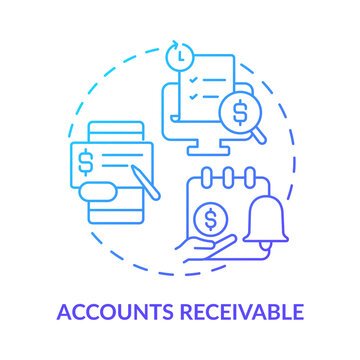The Critical Role of Accounts Receivable in Cash Flow Forecasting for U.S. Companies
In today’s volatile business environment, maintaining a healthy cash flow is more than a financial goal — it’s a necessity. One often underestimated factor that plays a key role in cash flow forecasting is accounts receivable (AR). For U.S. companies, especially small to mid-sized enterprises, understanding the role of accounts receivable in cash flow forecasting can be the difference between thriving and struggling.
Understanding Accounts Receivable (AR)
Accounts receivable refers to the money your customers owe for goods or services delivered on credit. For U.S. companies, AR reflects expected future cash inflows and sits as a current asset on the balance sheet. Every unpaid invoice represents future cash — but when that cash will actually arrive is often uncertain.
What Is Cash Flow Forecasting?
Cash flow forecasting involves estimating how much money will flow in and out of your business over a period. It helps U.S. businesses:
-
Predict potential cash shortfalls
-
Plan for expansion or cost-cutting
-
Make confident financial decisions
The two components are:
-
Cash inflows (revenue, loans, AR collections)
-
Cash outflows (expenses, debt repayments, payroll)
How Accounts Receivable Affects Cash Flow
Accounts receivable directly impacts cash inflows. If your business has a large amount of outstanding receivables but collections are delayed, your forecast might appear strong on paper but result in actual cash shortages.
The timing of AR collections plays a critical role. A 30-day payment term might sound fine, but if customers pay in 60 days, you’re misaligned with your forecast — which can lead to overdrafts, missed payments, or even lost opportunities.
Common AR Issues That Hurt Cash Flow
U.S. companies often face these AR-related challenges:
-
Late payments from clients
-
Disorganized invoicing systems
-
Lack of follow-up or automated reminders
-
Failure to assess creditworthiness
Each of these can distort your forecast and lead to poor financial decisions.
Using AR Data for Accurate Forecasting
To leverage accounts receivable in cash flow forecasting, businesses should analyze:
-
AR aging reports: Know which invoices are overdue
-
Customer payment history: Spot patterns and delays
-
Expected vs. actual collections
Modern accounting tools allow syncing AR data directly into forecasting dashboards, providing real-time insights.
Best Practices for Managing AR in Forecasting
-
Set and enforce clear payment terms
-
Automate your AR processes using invoicing software
-
Regularly update AR reports
-
Train your team on the importance of AR in planning
AR Metrics That Matter
Tracking these metrics helps U.S. companies forecast better:
-
Days Sales Outstanding (DSO): Average number of days to collect payment
-
AR Turnover Ratio: How efficiently you’re collecting
-
Average Collection Period: Time taken to turn AR into cash
The lower these numbers, the healthier your cash flow will likely be.
Case Study: From Chaos to Clarity
A mid-sized manufacturing firm in Ohio was struggling with inaccurate forecasts. Their AR team wasn’t aligned with finance, and they often had unexpected cash shortfalls.
By integrating their AR software with a forecasting platform and introducing strict follow-up systems, they reduced their DSO from 53 days to 34 days. The result? A 22% increase in cash-on-hand and improved budget planning.
Helpful Tools for U.S. Companies
To integrate accounts receivable in cash flow forecasting, try:
-
QuickBooks Online: AR + cash flow tools
-
Zoho Books: Invoicing + AR analytics
-
Float or Planful: Dedicated forecasting platforms
-
NetSuite ERP: Advanced, all-in-one solution
Benefits of Aligning AR with Forecasting
-
More accurate cash planning
-
Better risk mitigation
-
Faster decision-making
-
Improved credit control
When AR is correctly forecasted, your business can operate confidently without surprises.
Challenges to Watch Out For
Despite its importance, aligning AR and forecasting isn’t always easy. Watch out for:
-
Inconsistent customer behavior
-
Fluctuating market conditions
-
Data silos between AR and finance departments
Expert Tips for U.S. Finance Teams
-
Conduct monthly AR reviews
-
Hold cash flow planning meetings cross-functionally
-
Use visual dashboards for instant clarity
-
Invest in training on AR’s financial impact
Conclusion
Accounts receivable in cash flow forecasting is not just a line item — it’s a financial lifeline. For U.S. companies looking to improve liquidity, plan ahead, and grow confidently, integrating AR into your forecasting process is a strategic must.

